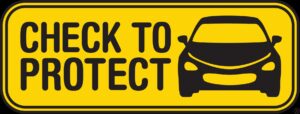Select a Year and City/County from the drop-down lists and click on the Submit Button.
What are the OTS Rankings?
The OTS Rankings were developed so that individual cities could compare their city’s traffic safety statistics to those of other cities with similar-sized populations. Cities could use these comparisons to see what areas they may have problems in and which they were doing well in. The results helped both cities and OTS identify emerging or on-going traffic safety problem areas in order to help plan how to combat the problems and help with the possibility of facilitating grants. In recent years, media, researchers and the public have taken an interest in the OTS Rankings. It should be noted that OTS rankings are only indicators of potential problems; there are many factors that may either understate or overstate a city/county ranking that must be evaluated based on local circumstances.
How are the OTS Rankings determined?
- Crash rankings are based on the Empirical Bayesian Ranking Method, which adds weights to different statistical categories including observed crash counts, population and vehicle miles traveled. The crash counts reflect the aggregated impacts of all influential factors containing even the unrecognized or unmeasurable ones (e.g. level of enforcement), and the population and vehicle miles traveled represent the important traffic exposure factors that affect crash occurrence. The weights are assigned to the three components in a way that maximizes the precision of estimated Bayesian crash counts.
- Data for the rankings is taken from Incorporated Cities only. This includes Local streets and state highways within city limits that share jurisdiction with the CHP. (Note: If a crash report is taken by the CHP on a road with shared jurisdiction, it does not count against the city)
- There is additional data that comes from multiple sources. Crash data comes from Statewide Traffic Records System (SWITRS) Population Estimates come from California Department of Finance (DOF) Daily Vehicle Miles Traveled (DVMT) come from California Department of Transportation (Caltrans)
- Counties are assigned statewide rankings, while cities are assigned population group rankings. County rankings also include all crashes, killed, and injured on all roadways within county limits.
- Note: All incorporated cities are included in the rankings. Contact the OTS at contactots@ots.ca.gov or by calling our office at 916-509-3030.
How to Read and Understand the OTS Rankings
Top Horizontal Bar:
- Agency – local jurisdiction that the data applies to.
- Year – the year the data represents. The rankings are updated once per year when all component statistics and data have been reported.
- County – county in which the city is located.
- Group – Cities are grouped by population:
- Group A – Populations over 250,000
- Group B – Population 100,001-250,000
- Group C – Population 50,001-100,000
- Group D – Population 25,001-50,000
- Group E – Population 10,001-25,000
- Group F – Population 2,501- 10,000
- Group G – Population 1-2,500
- Population – estimates matched to “Year”
- DVMT – Daily Vehicle Miles Traveled. Caltrans estimate of the total number of miles all vehicles traveled on that city’s streets on an average day during that year.
- The number of cities in each group varies by year.
Center Table:
IMPORTANT NOTE #1: The figures in the ranking column show as two numbers divided by a slash. The first number is that city’s ranking in that category. The second number is the total number of cities/counties within that “Group”. For instance, if you see “22/57”, that means that city ranks 22nd out of 57 cities of similar size.
IMPORTANT NOTE #2: Number 1 in the rankings is the highest, or “worst.” So, for Group B, a ranking of 1/57 is the highest or worst, 27/57 is average, and 57/57 is the lowest or best.
Headings
- Type of Crash – This column delineates the different types of crashes OTS has chosen to show in the rankings. These represent the types with larger percentages of total killed and injured and areas of focus for the OTS grant program.
- Victims Killed and Injured – This column shows the number of fatalities and injuries aggregated. Damage-only or fender-bender crashes are not included.
- Ranking – This column shows what ranking that city has as compared to other comparably sized incorporated cities in California for that particular type of crash. The first number is that city’s ranking for that type of crash. The second number is the total number of cities/counties within that population grouping.
Crash Category
- Total Fatal and Injury – The total number of victims involved in all crashes where there were fatalities and/or injuries in that city/county.
- Alcohol Involved – Crashes in which there were victims killed or injured where a party (driver, pedestrian, bicyclist) was classified as “Had Been Drinking.”
- Had Been Drinking Driver <21 – Crashes in which there were victims killed or injured involving a driver who had been drinking and under the age of 21. “Had Been Drinking” includes under the influence of alcohol, not under the influence of alcohol, and alcohol impairment unknown.
- Had Been Drinking Driver 21-34 – Crashes in which there were victims killed or injured involving a driver who had been drinking and between the ages of 21 and 34. “Had Been Drinking” includes under the influence of alcohol, not under the influence of alcohol, and alcohol impairment unknown.
- Motorcycles – Crashes in which there were victims killed or injured and a motorcycle was involved.
- Pedestrians – Crashes in which there were victims killed or injured and a pedestrian was involved.
- Pedestrians <15 – Crashes in which the victims killed or injured were a pedestrian under the age of 15.
- Pedestrians 65+ – Crashes in which the victims killed or injured were a pedestrian age 65 and older.
- Bicycle – Crashes in which there were victims killed or injured and a bicyclist was involved.
- Bicyclist <15 – Crashes in which the victims killed or injured were a bicyclist under the age of 15.
- Composite – Figures which show rankings only, an aggregate of several of the other rankings (Had Been Drinking 21-34, Had Been Drinking Under21, Alcohol Involved, Hit & Run, Nighttime and Speed crashes). These figures are a means to give an indication of over-all traffic safety.
Bottom Table:
- Speed Related – Crashes in which there were victims killed or injured where speed was the primary factor.
- Nighttime (9:00pm – 2:59am) – Crashes in which there were victims killed or injured that occurred between those hours, which are prime hours for DUI, speeding and drowsy driving crashes.
- Hit and Run – Crashes in which there were victims killed or injured and a driver left the scene.
- *DUI Arrests – DUI arrest figures are shown for cities only, not counties. The number of cities ranked against may be different than from the number of cities in the other categories. Not all cities report DUI arrests to the Department of Justice.











